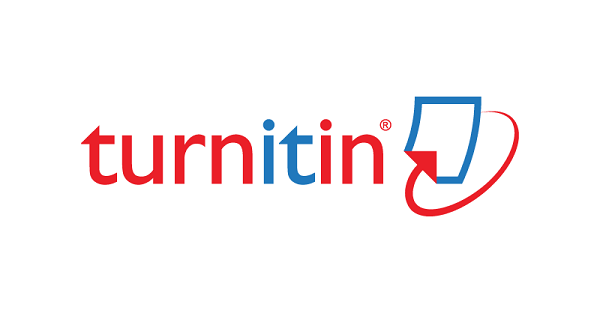Legal Protection for Child Criminals in the Indonesian Justice System
Abstract
Abstract. Law Number 11 of 2012 concerning the Juvenile Criminal Justice System stipulates that juvenile justice in absolute competence is within the scope of the General Court. The form of providing legal protection is intended to provide oportunities for children to become responsible human beings in their future. The objectives of this study: 1). to determine and analyze legal protection for child perpetrators of criminal acts in the current judicial system in Indonesia; 2). to determine and analyze the weaknesses and solutions for legal protection for child perpetrators of criminal acts in the current judicial system in Indonesia. This study uses a normative legal aproach, with a descriptive analytical research method. The data used are primary and secondary data that will be analyzed qualitatively. Research problems are analyzed using the theory of punishment, retributive theory, legal purpose theory, combined theory and legal system theory. The results of the study concluded that: 1) Legal protection for children in the criminal justice system in Indonesia can be seen from the entire legal process, starting from the investigation stage, arrest and detention, prosecution, trial and guidance. The entire process must be carried out based on the provisions of the SPA Law and must prioritize the needs, development and growth of children, both mentally, physically, and socially, and the interests of the community. Law Number 11 of 2012 concerning the Juvenile Criminal Justice System (SPA Law) provides legal protection for children in conflict with the law (consisting of children in conflict with the law, children who are victims of criminal acts and children who are witnesses to criminal acts) in Indonesia.; 2). The weaknesses of legal protection for children who commit crimes are the lack of quality and quantity of human resources of law enforcement officers who handle criminal cases committed by children, and the lack of coordination between law enforcement officers and related institutions that handle criminal cases. The solution to these weaknesses is that law enforcers should improve the quality and quantity of human resources of law enforcement officers who handle criminal cases committed by children and increase synergy between related law enforcers.
Keywords
Full Text:
PDFReferences
Journals:
Mujiburrahman, Diversion and Imposition of Criminal Sanctions in the Juvenile Justice System, Journal of Legal Studies, Vol. 5 Number 1, 2018,
Randy Pradityo, “Restorative Justice in the Juvenile Criminal Justice System”, Journal of Law and Justice, Volume 5, Number 3, November 2016,
Rina Nurhaliza, Herry Liyus, Dheny Wahyudi, Implementation of Diversion Agreement at Investigation Level in Criminal Justice System, Jurnal Of Criminal Law, Vol. No.1, 2020,
Setyorini, EH, Sumiati, S., & Utomo, P. (2020). The Concept of Restorative Justice for Children in Conflict with the Law in the Juvenile Criminal Justice System. DiH: Journal of Legal Studies,
Sri Rahayu, Diversion as an Alternative to Settlement of Criminal Cases Committed by Children in the Perspective of the Juvenile Criminal Justice System, Journal of Legal Studies, 2015,
Zulfikar Judge. “The Position of Children in Conflict with the Law as Perpetrators of Criminal Acts”, Lex Jurnalica, Volume 13, Number 3, December 2016.
Books:
Amiruddin and H. Zainal Asikin, 2006, Introduction to Legal Research Methods, Jakarta: PT. Raja Grafindo Persada,
Barda Nawawi Arif in Waluyadi, Child Protection Law, Bandung: Mandar Maju, 2009,
Maidin Gultom, Legal Protection for Children in the Juvenile Criminal Justice System in Indonesia, Bandung: Refika Aditama, 2008.
Nikmah Rosidah, 2014, Legal Culture of Juvenile Judges in Indonesia, Semarang: Pustaka Magister,
Paulus Hadisuprapto, Understanding and Dealing with Child Delinquency, Malang: Bayumedia Publishing, 2008,
Peter Mahmud Marzuki, 2010, Legal Research, Jakarta: Kencana Prenada.
Rio Fabry, 2016, “Analysis of the Implementation of Restorative Justice Principles in Traffic Crime Cases with Child Perpetrators”, Thesis, Lampung: Postgraduate Program in Law, Faculty of Law, University of Lampung,
Romli Atmasasmita, 1996, Criminal Justice System, Bandung, , Bina Cipta,
Setya Wahyudi, Implementation of Diversion Ideas in Reforming the Juvenile Justice System in Indonesia, Yogyakarta: Genta Publishing, 2011.
Yahya Harahap, 2015, Discussion of Problems and Implementation of Criminal Procedure Code (Court Hearing Examination, Apeal, Cassation, and Judicial Review), Jakarta: Sinar Grafika,
Regulation:
Article 1 number 1 and Article 2 of Law Number 11 of 2012 concerning the Juvenile Criminal Justice System.
Article 24 of Law Number 11 of 2012 concerning Amendments to Law Number 3 of 1997 concerning Juvenile Justice (Juvenile Criminal Justice System)
Convention on the Rights of the Child, Adopted by the United Nations General Assembly on 20 November 1989. Article 40
Law no. 4 of 1979 concerning Child Welfare. Article 1 number 2
The United Nations Guidelines for the Prevention of Juvenile Delinquency – the Riyadh Guidelines, adopted and proclaimed in UN General Assembly Resolution No. 45/112 of 14 December 1990. Article 10.
The United Nations Rules for the Protection of Juvenile Deprived of their Liberty. Adopted by UN Assembly Resolution 45/133 of 14 November 1990.
The United Nations Standard Minimum Rules for Administration of Juvenile Justice – the Beijing Rules, Adopted by UN Assembly Resolution No. 40/33 of 29 November 1985. Point 6 points (1), (2) and (3), see also explanation
DOI: https://dx.doi.org/10.30659/jhku.v20i2.46216
Refbacks
- There are currently no refbacks.

This work is licensed under a Creative Commons Attribution 4.0 International License.
Jurnal Hukum Khairu Ummah Indexed by :
 | Jurnal Hukum Khaira Ummah | |
| Faculty of Law, Unissula | Copyright of Jurnal Hukum Khaira Ummah | |
| Jalan Kaligawe Raya KM.4, Terboyo Kulon, Genuk, | ISSN ( 1907-3119 ) e-ISSN ( 2988-3334 ) | |
| Semarang, Central Java, Indonesia, 50112 |





